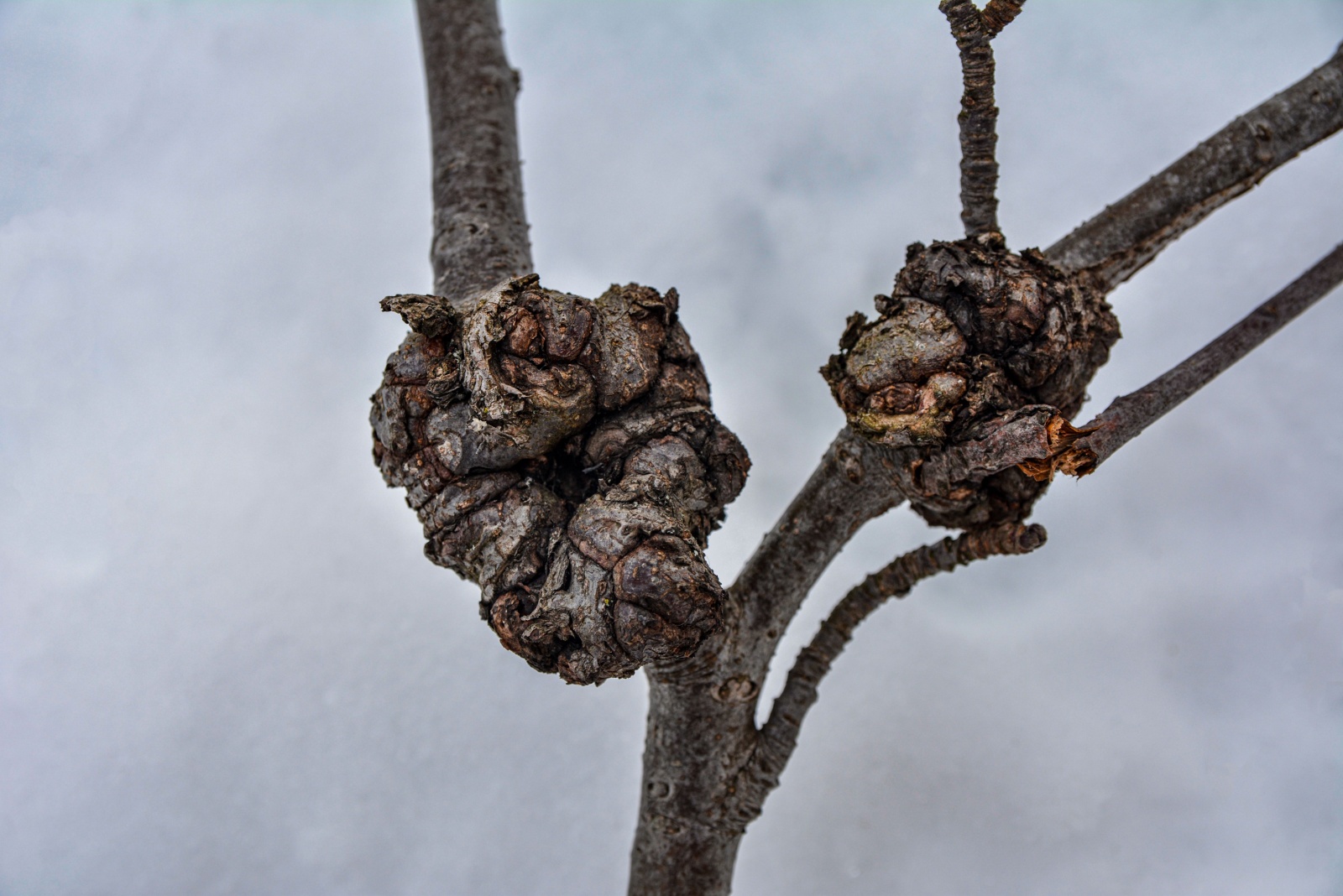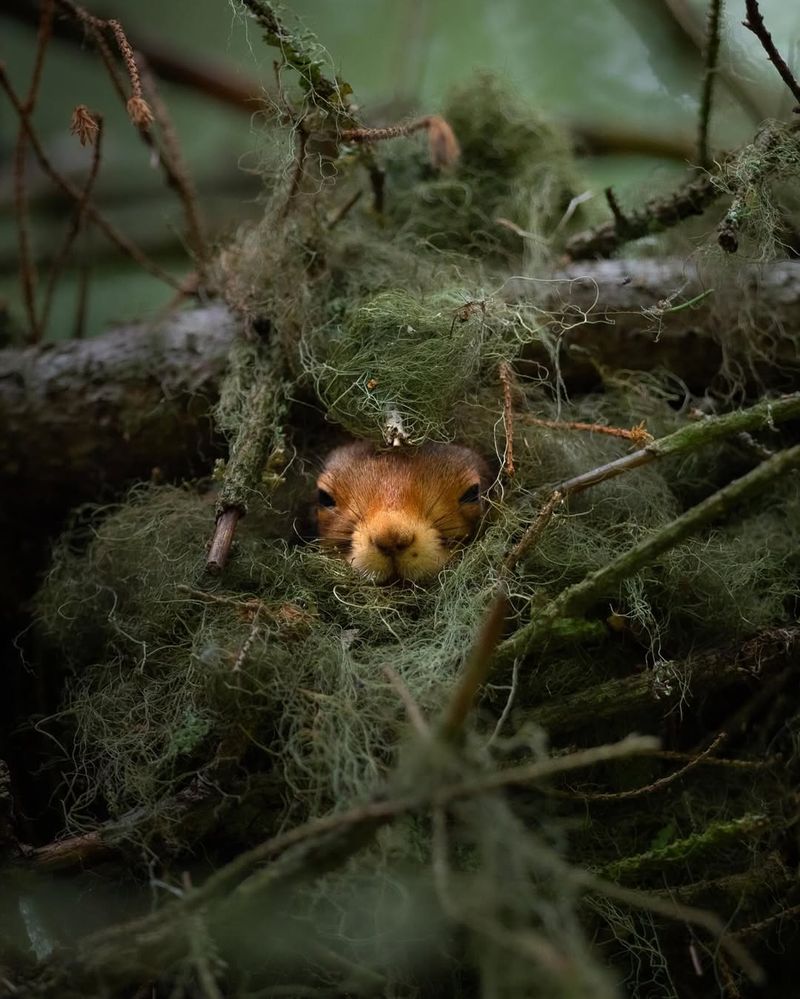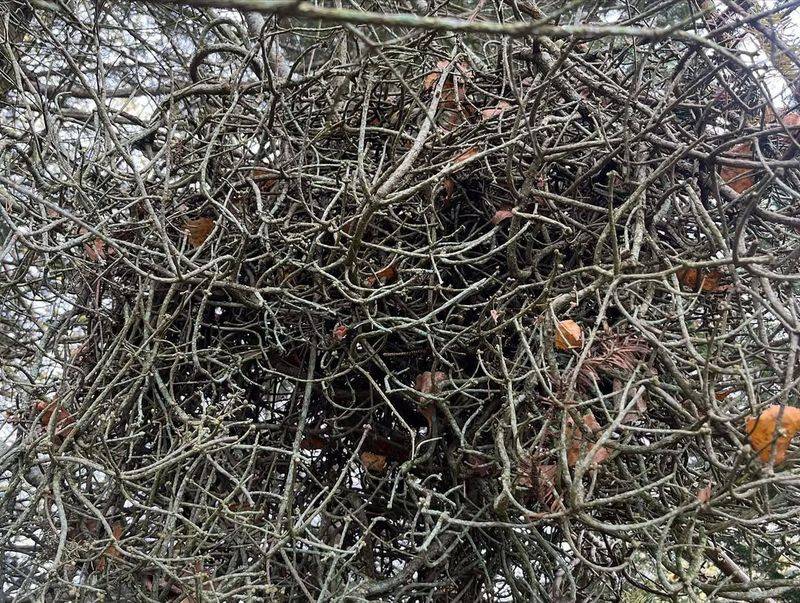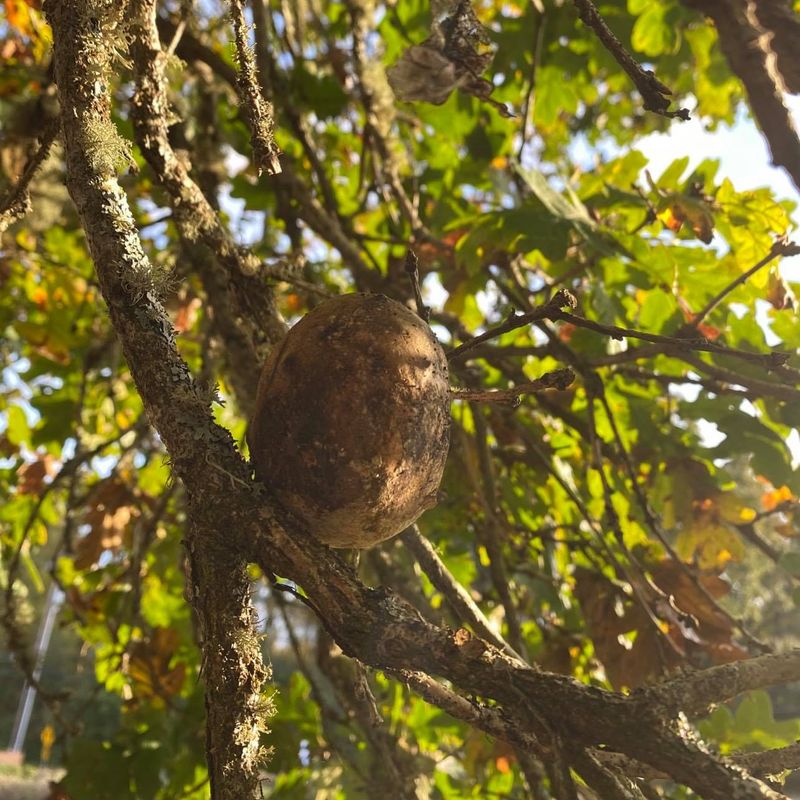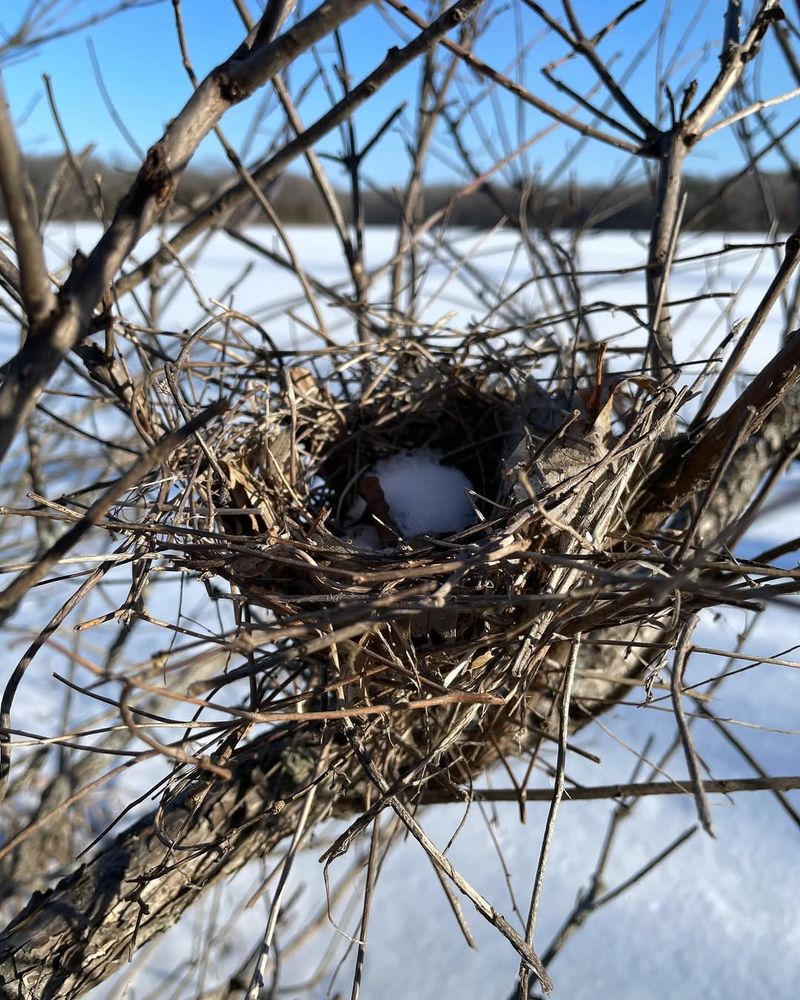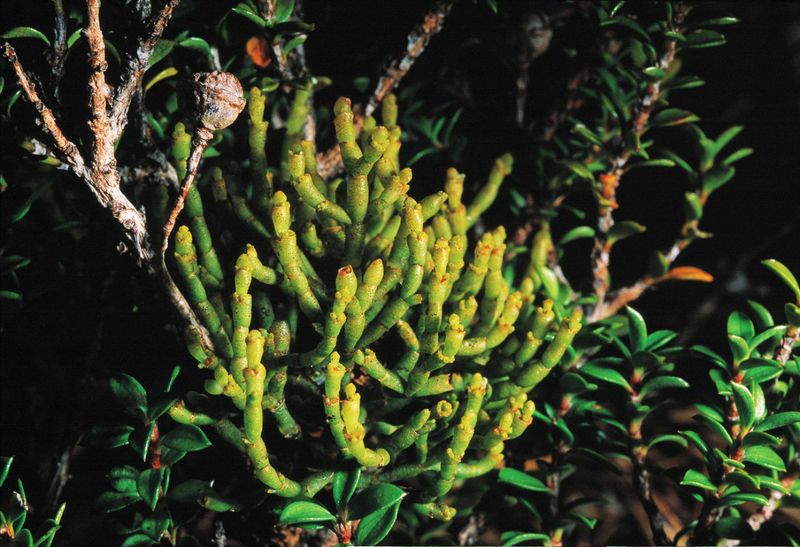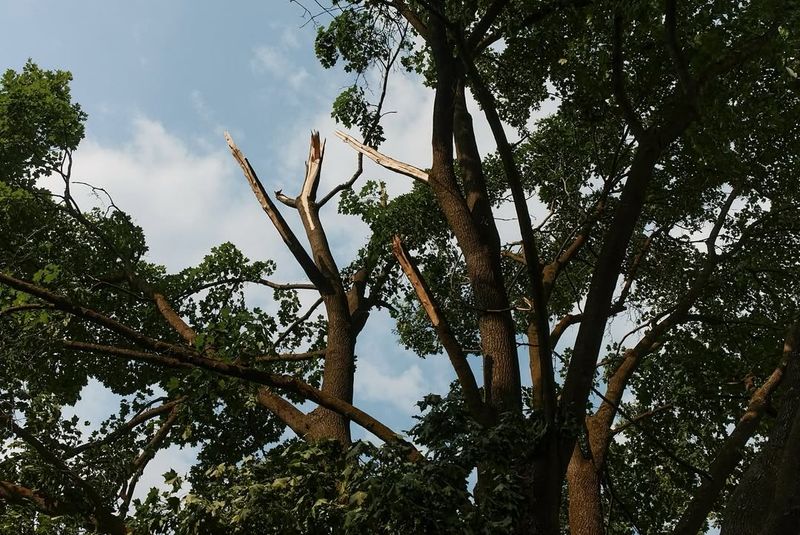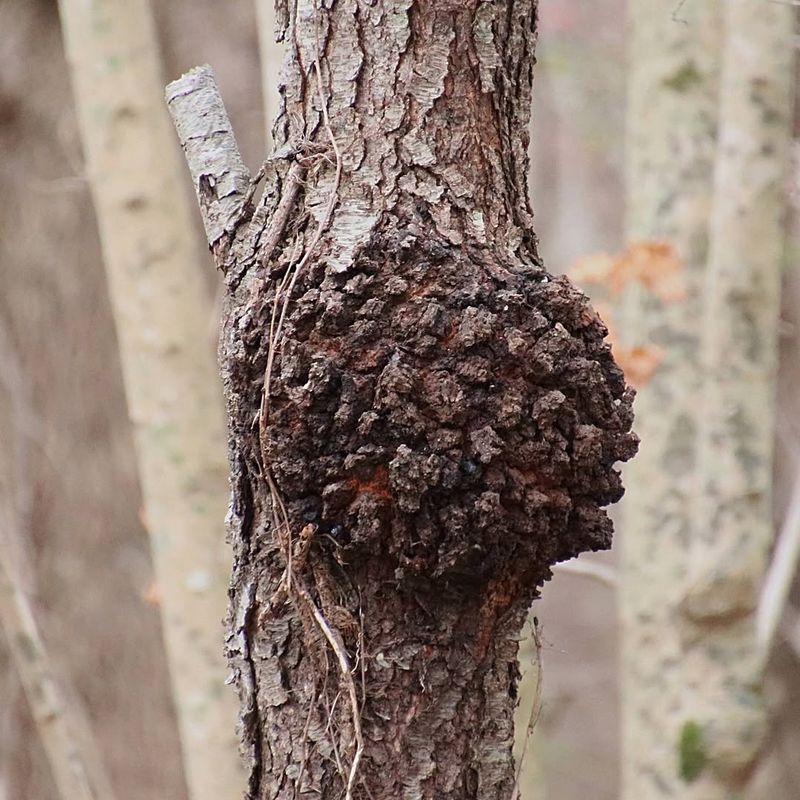When you glance up at your backyard tree, spotting what appears to be a bird’s nest is pretty common. But not everything round and twiggy up there is actually a home for feathered friends.
Minnesota trees host all kinds of unusual growths and formations that can fool even experienced nature watchers, and knowing what you’re really looking at can help you take better care of your trees.
1. Squirrel Dreys Built For Winter Survival
Squirrels construct elaborate homes called dreys that often get mistaken for bird nests throughout Minnesota neighborhoods. Built from leaves, twigs, and moss, these球-shaped structures sit wedged between branches and can grow quite large.
Unlike bird nests, dreys have a roof and walls to protect squirrels from harsh winter weather. You’ll typically spot them 20 to 40 feet up in the tree canopy.
During fall, squirrels work overtime building and repairing their dreys before snow arrives, so don’t be surprised if you notice fresh construction activity in your yard.
2. Witches’ Broom Disease Creates Odd Clusters
Sometimes trees develop strange, tangled masses of branches that bunch together unnaturally. Witches’ broom disease causes this bizarre growth pattern when fungi, mites, or viruses infect the tree’s normal development process.
The result looks remarkably similar to a messy bird nest wedged into the branches. Ash, cherry, and birch trees commonly show these symptoms across Minnesota.
While it might look alarming, witches’ broom rarely kills the entire tree, though removing affected branches can improve the tree’s appearance and health over time.
3. Galls Form When Insects Lay Eggs
Oak trees throughout Minnesota frequently develop round, lumpy growths called galls that confuse homeowners. Tiny wasps and other insects inject chemicals when laying eggs inside tree tissue, triggering abnormal cell growth that creates these peculiar structures.
Some galls grow as large as softballs and appear nest-like from a distance. They’re actually protective homes for developing insect larvae inside.
Most galls won’t seriously harm your tree, though heavy infestations might weaken younger trees. Removing them isn’t usually necessary unless they’re causing branch damage.
4. Old Nests Left Behind After Breeding Season
Many birds abandon their nests once babies leave, and these leftover structures remain visible for months or even years. What you’re seeing might actually be an old nest from last spring’s breeding season rather than an active home.
Weathered nests lose their neat appearance and blend with surrounding branches, making identification tricky. Robins, crows, and hawks commonly leave behind substantial nests in Minnesota trees.
Before removing what looks like a nest, check carefully during spring and summer to ensure it’s truly abandoned and not housing new tenants.
5. Mistletoe Clumps Parasitize Tree Branches
Mistletoe plants attach themselves to tree branches and create dense, rounded clumps of greenery year-round. As parasites, they steal water and nutrients from host trees while their thick growth pattern mimics nest structures.
Minnesota’s dwarf mistletoe species particularly affects conifer trees like pines and spruces. The evergreen clusters stand out dramatically during winter months when deciduous trees lose their leaves.
Heavy mistletoe infestations can weaken trees over time, so removing affected branches helps protect your tree’s long-term health and prevents further spread to neighboring trees.
6. Storm Damage Creates Tangled Branch Piles
Severe thunderstorms and high winds frequently break branches that don’t fall completely to the ground. Instead, they lodge between other branches, creating jumbled masses that resemble large nests from below.
Ice storms during Minnesota winters also cause this phenomenon when heavy ice weighs down branches until they snap. The resulting tangles can stay trapped in trees for months.
Removing storm-damaged branches prevents further injury to the tree and eliminates safety hazards, especially near homes, driveways, or areas where people gather regularly underneath.
7. Burl Growths Develop From Tree Stress
Burls are rounded, knobby growths that develop on tree trunks and branches when trees experience stress from injury, infection, or environmental factors. From far away, especially on smaller branches, burls can look surprisingly nest-like.
Minnesota trees develop burls in response to various stressors including insect damage, fungal infections, or physical wounds. The wood inside burls grows in unusual, swirling patterns.
While burls don’t typically harm trees, monitoring them helps track your tree’s overall health. Some woodworkers actually prize burl wood for its unique grain patterns and beauty.

